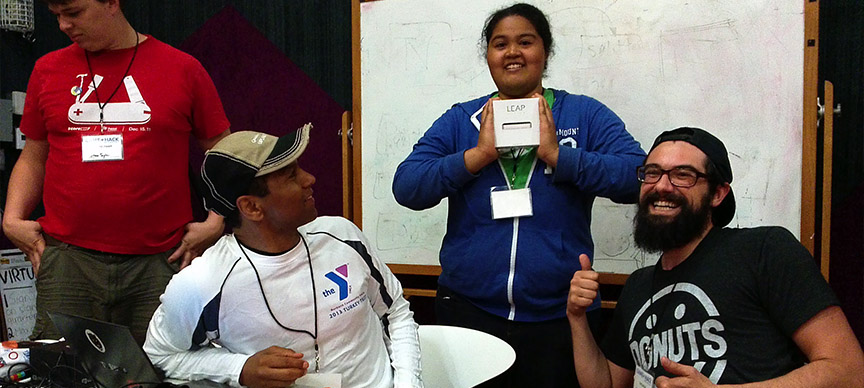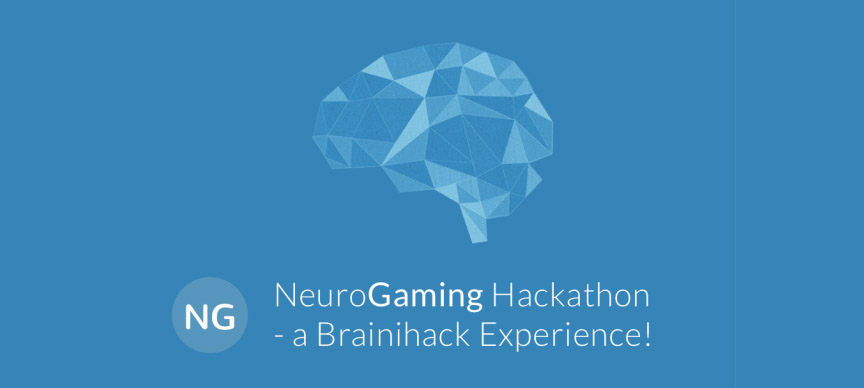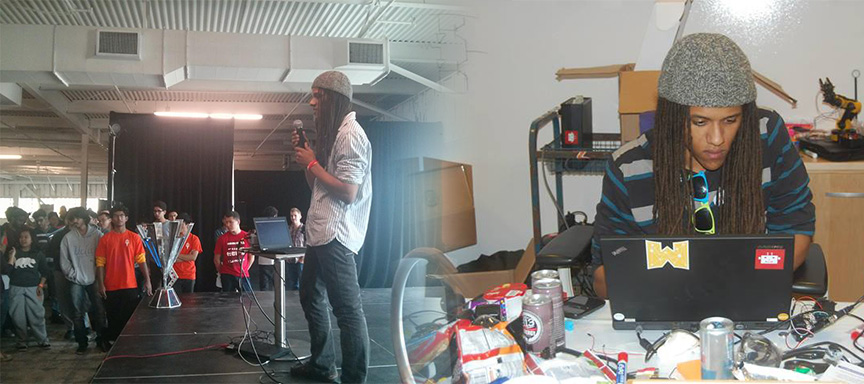Last weekend’s Brainihack coding bender whet our appetites for what’s possible in the landscape of Neurotechnology, sending our imaginations into the far reaches of dystopian fantasies wherein objects (or people) can be levitated, then summoned, in the course of a single thought. This week, we had the opportunity to dig even deeper into next generation EEG headsets, virtual and augmented […]
// Events

For a lot of kids, STEM subjects (science, technology, engineering, and math) can seem distant and inaccessible. This weekend, Nickelodeon and the city of Burbank kicked off Game+Hack – a three-day hackathon where students, teachers, and novices joined developers, designers, and NASA engineers to play with the latest gadgets and build creative mobile apps.

This weekend, 100 developers, designers, and makers gathered at Apportable HQ to wrestle with ways we can use devices to hack into our neural pathways. From anxiety and panic suppression, to speed reading, to chair flying flight simulators, to mood bracelets, we saw some incredible projects produced over the course of two days – several of which artfully integrated Leap Motion technology.
Nowadays, just about everything has an API, from lightbulbs to needy toasters. While we’ve seen our fair share of drone hacks using JavaScript, what happens when your drone is controlled by a closed-end analog signal?
Perhaps the most exciting thing about IoT is that everyday uses don’t always reveal themselves right away. Sometimes they need to be coaxed out. By experimenting at the edges of what’s possible with modern APIs, the hacker community gets to define those possible uses and parameters. At Hackendo, this past weekend’s wearables-and-externals IoT hackathon, I […]
When the first boots of a human being land on Mars, imagine being able to RSVP and attend the event from your living room and actually feel like you were there, right next to the astronauts. Equipped with versions of the augmented and virtual reality technologies currently under exploration at NASA, this is an incredibly […]
Leapouts is a collaborative 3D model builder, controlled with Leap Motion interaction, that runs inside a Google Hangout. We’ve made a demo available for you to try at leapouts.com. But how did we build it over a weekend without ever having used the Leap Motion API, Firebase, or Three.js before?



